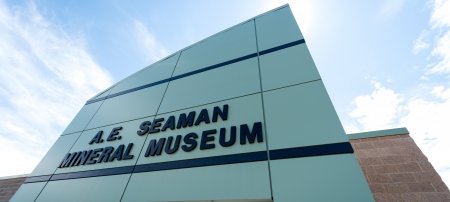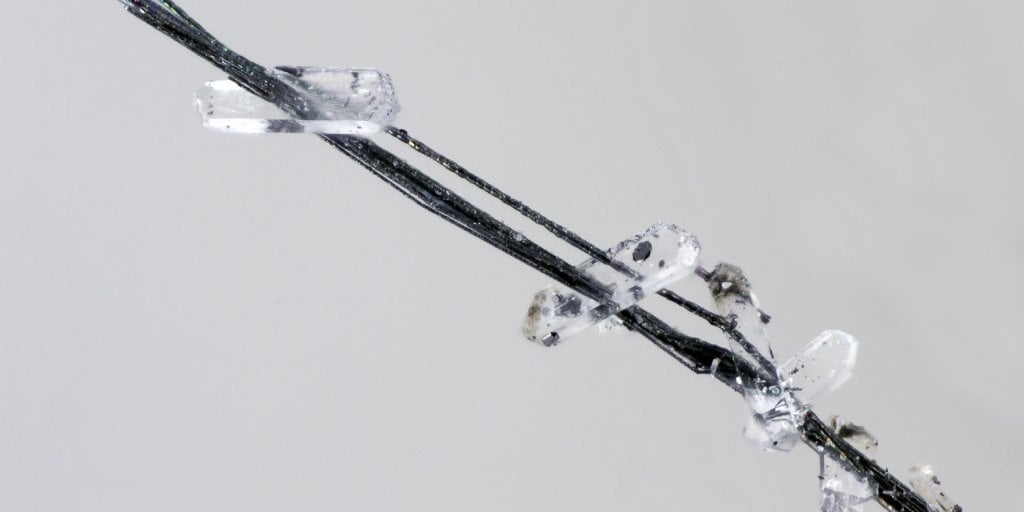New Mineral Named for Seaman Museum Curator

A new mineral discovered in the Mammoth-St. Anthony mine in Arizona has been named georgerobinsonite. The mineral is named after George W. Robinson, professor of mineralogy and curator of Michigan Tech's A. E. Seaman Mineral Museum. It is a lead chromate—a salt of chromic acid—that occurs as minute, transparent, orange-red crystals on cerussite, another lead carbonate and secondary lead mineral.
The publication Mineral News reported on the newly named mineral in its February 2012 issue.
A team of Canadian scientists discovered the new mineral and reported on it in the
October 2011 issue of the journal The Canadian Mineralogist. They decided to name it for Robinson because "George is a prominent curator who
has contributed a lot to the mineral community," said Frank Hawthorne, corresponding
author on the journal article and a professor at the University of Manitoba. Hawthorne
and the journal article’s other authors got to know Robinson during his 14 years as
curator of the Canadian Museum of Nature, where he worked before coming to Michigan
Tech.
It is a convention in the profession not to name new minerals for their discoverers,
Hawthorne explained. A description of the new mineral and its proposed name is submitted
to a committee of the International Mineralogical Association, which must validate
the description of the find as a unique mineral and approve the recommended name.
The IMA has approved naming the new mineral georgerobinsonite.
"It's a real honor," said Robinson, who also said the naming came as a complete surprise
to him. "It's like a chemist having a new element named after him. I guess it's in
recognition of my long career as a mineralogist and a curator."
Michigan Technological University is an R1 public research university founded in 1885 in Houghton, and is home to nearly 7,500 students from more than 60 countries around the world. Consistently ranked among the best universities in the country for return on investment, Michigan's flagship technological university offers more than 185 undergraduate and graduate degree programs in science and technology, engineering, computing, forestry, business, health professions, humanities, mathematics, social sciences, and the arts. The rural campus is situated just miles from Lake Superior in Michigan's Upper Peninsula, offering year-round opportunities for outdoor adventure.




Comments